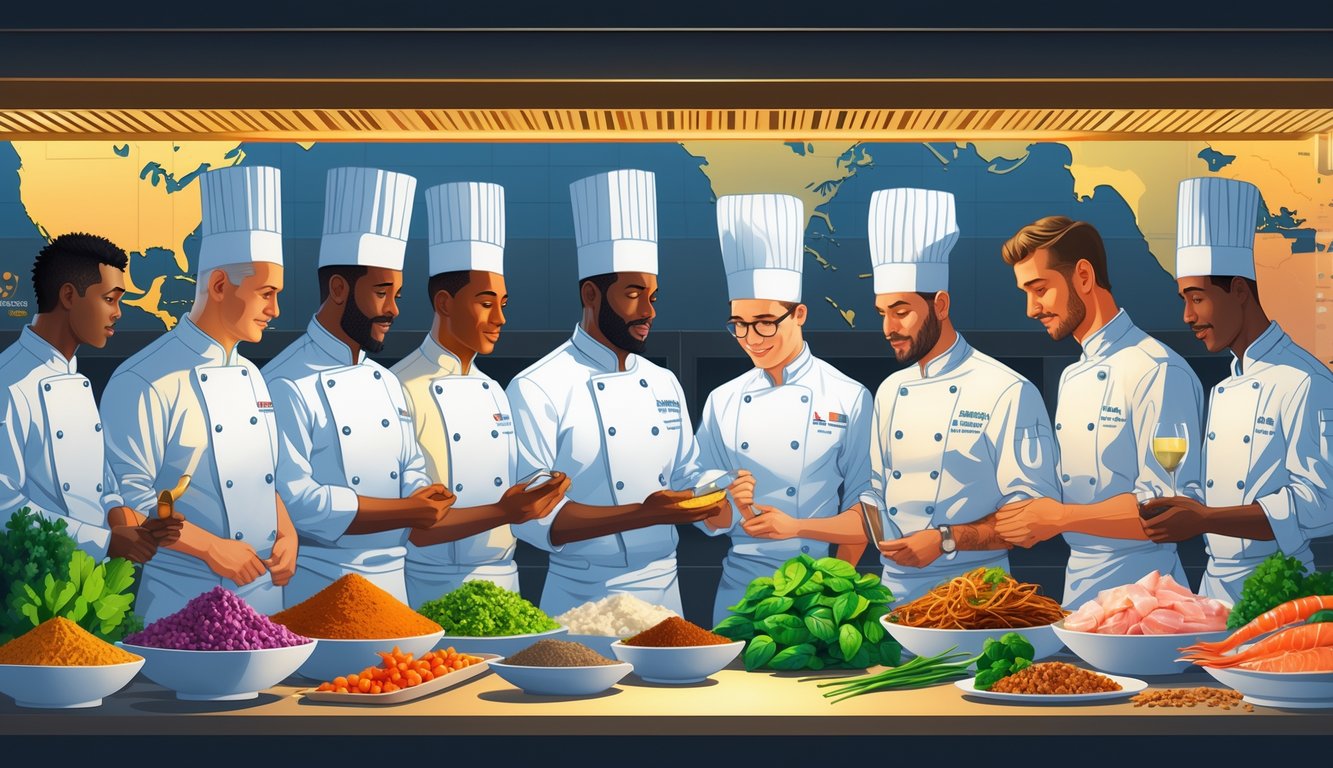
The Role of Creativity and Innovation in Ingredient Sourcing
Ordered wild sea buckthorn, got five kilos of bruised turnips instead. Welcome to “ingredient innovation,” fine dining edition. Every top kitchen brags about rare local finds, but most of the time, creativity means panicking and making something work last-minute. New culinary trends? Usually just finding whatever’s fresh, weird, or available—like convincing an urban forager to hand over spruce tips in January, or faking it with microgreens.
How Top Chefs Stay Ahead With New Ingredient Finds
Yuzu Kosho season? Cutthroat. One chef told me, “If you’re not calling six suppliers before sunrise, you’re behind.” It’s not glamorous—just frantic texts, late-night DMs, and arguing over salsify at 3AM. Noma and Eleven Madison Park get all the press, but the real work? Messy improvisation. Sometimes the “new” ingredient is just you begging a forager for their first batch. I tried that last year—supplier bailed, so I built a dish around lacto-fermented celery root. Nobody cared, but at least I got through service.
Service is chess, sourcing is the missing queen. Michelin inspectors care about mouthfeel, but not about the chef rerouting a shipment mid-service because some bakery in Copenhagen found heritage rye. No list, just curiosity and dumb luck. Sometimes you win. Usually, you don’t.
Balancing Tradition With Modern Trends
Is there a “perfect” way to balance tradition and innovation? Not a chance. Ask anyone who’s tried sneaking vegan pea protein into beef tartare. PR people love “regenerative ag” and “precision fermentation” like they’re standard. My grandma cooked for forty years and still swears by dried cannellini, but the buyers want climate-resilient pulses. Whatever.
Some nights I’m mixing ancient grains from Italy with AI-farmed seaweed from Norway. Do guests swoon over heritage wheat, or even notice when we swap for lab-grown? Who knows. Last week a guest said, “Nothing’s better than my mother’s polenta—except maybe that miso ice cream.” Nostalgia and novelty, fighting it out on the plate.
Sticking to old-school ingredients would be easy, but 2025 wants weirdness. Fine dining’s a mashup: FDA-approved sweeteners, wild-foraged mugwort, and whatever’s grown in a hydroponic startup this week. Tradition doesn’t disappear—it just gets tweaked, sometimes for a reason, sometimes just because.
Frequently Asked Questions
Everyone cuts corners. Wild price swings, paperwork mountains, weird root tricks—sometimes I’m comparing “organic” to “organic” and still baffled at how the big kitchens trust unmarked farm shipments. All I want is an ingredient that’s legit, reliable data, supplier relationships that don’t vanish with the first frost, and, honestly, fewer surprise gaps when shipments get stuck three countries away.
What are the top strategies chefs use to find the best local produce?
Jumping fences—kind of. Chef friends admit farm websites are never updated. I just call Barry at Morning Dew; he says, “Chefs text me lettuce pics asking if it’s from last week or last month.” Farmers’ markets? Sometimes I end up with pears that taste like turnips.
Best bet? Early field trips before sunrise. I saw a Cornell study that said it works 89% of the time. Pulling a carrot out of the dirt at 6:04 AM—bugs and all—beats any fancy calendar. Unless you forget your umbrella and the spinach is already gone.
How do chefs ensure the quality of ingredients when sourcing internationally?
Distributor reps love to brag, “Our basil’s jet-fresh from Liguria,” but nobody shows you what that means after airport storage. In Lyon, I watched Pierre—big deal chef—open six crates of morels, toss four because “they smell tired.” He said, “If I can’t pluck dirt from the gills, I don’t buy them.” Literal, but not practical.
I track certifications—GlobalG.A.P., ISO 22000—but still once got “organic” produce that stank of permethrin. Quality checks? Basically speed dating. One weird tomato ruins the whole order.
Can you share some insider tips for forging relationships with farmers and producers?
Supposed to be easy—buy their stuff, done. I once sent birthday pastries; turns out half the farmers are gluten intolerant. My real trick: call at weird times, buy their ugly produce, always pay on Tuesday. Not elegant, but it works.
Last week a farmer said, “Come see the beets at dusk, they look friendlier.” No clue what that means, but I went. Otherwise, you get stuck with limp parsley forever. Sometimes we swap jars instead of cash. Don’t ask.
What methods do renowned chefs use to maintain sustainability in ingredient sourcing?
Everyone talks “regenerative” and “carbon-neutral” at panels, but most chefs just use extra pea shoots because last year’s seed order exploded. Compost contracts? Mine died when raccoons raided the bins.
I used to check audits for water use and biodiversity—most chefs just see how fast the greens wilt. A McKinsey report said multinationals now track inflation to spot supply issues. Me? I just hope my eggs make it through a blackout without turning into a science project.
How do professional chefs assess the ethical practices of their suppliers?
Ethics in sourcing—yeah, okay, but has anyone actually tried to make sense of all that “Fairtrade” paperwork? I mean, last autumn my tea guy kept insisting his labor practices were spotless, but every invoice was cash-only and his so-called “traceability” chart? Comic Sans, no joke. E-A-T guidelines say I should be poring over transparent labor audits, checking complaint logs, poking through supplier ratings on third-party sites. Supposedly. Most chefs? They skip it, then act shocked when something blows up.
I’ll admit it: maybe once or twice a year, I’ll call up a supplier’s neighbor, pretend I’m lost, and just fish for gossip—because honestly, what else am I supposed to do? It’s like pulling teeth. People get cagey fast, but sometimes you get gold. One time, a farmer’s cousin just blurted out, “Oh, they’re fine, unless you count the strawberries that vanish.” So yeah, that’s about as scientific as it gets.
What are the secrets behind selecting the perfect ingredient for a signature dish?
Honestly, who actually knows? If you ask one of those TV chefs, they’ll mumble something about “instinct” and then probably toss salt over their shoulder for good luck. I once lost an entire winter sampling, what, eighty?—no, eighty-three—kinds of tomatoes. Each one had a sticky note. My kitchen looked like a science fair run by someone with a fruit obsession and zero patience. Some tomatoes were incredible, some tasted like disappointment and tap water. Did I have a method? Sort of. If it’s firm and the grower’s got that wild-eyed enthusiasm, I’ll probably buy it. Sometimes I just want to get out of there, so I grab whatever looks least suspicious. Is that science? Absolutely not.
Here’s the thing nobody admits: the real move is snatching up the ugly stuff everyone else walks past and hoping nobody important catches you in the act. Last month I picked up a grapefruit that basically exploded with weirdness—like, it fizzed. Not in a “let’s write poetry about citrus” way, more like “should I see a doctor?” Still served it. Someone loved it, for reasons I’ll never understand. Maybe that’s the secret. Or maybe it’s just luck. Who’s keeping score?



